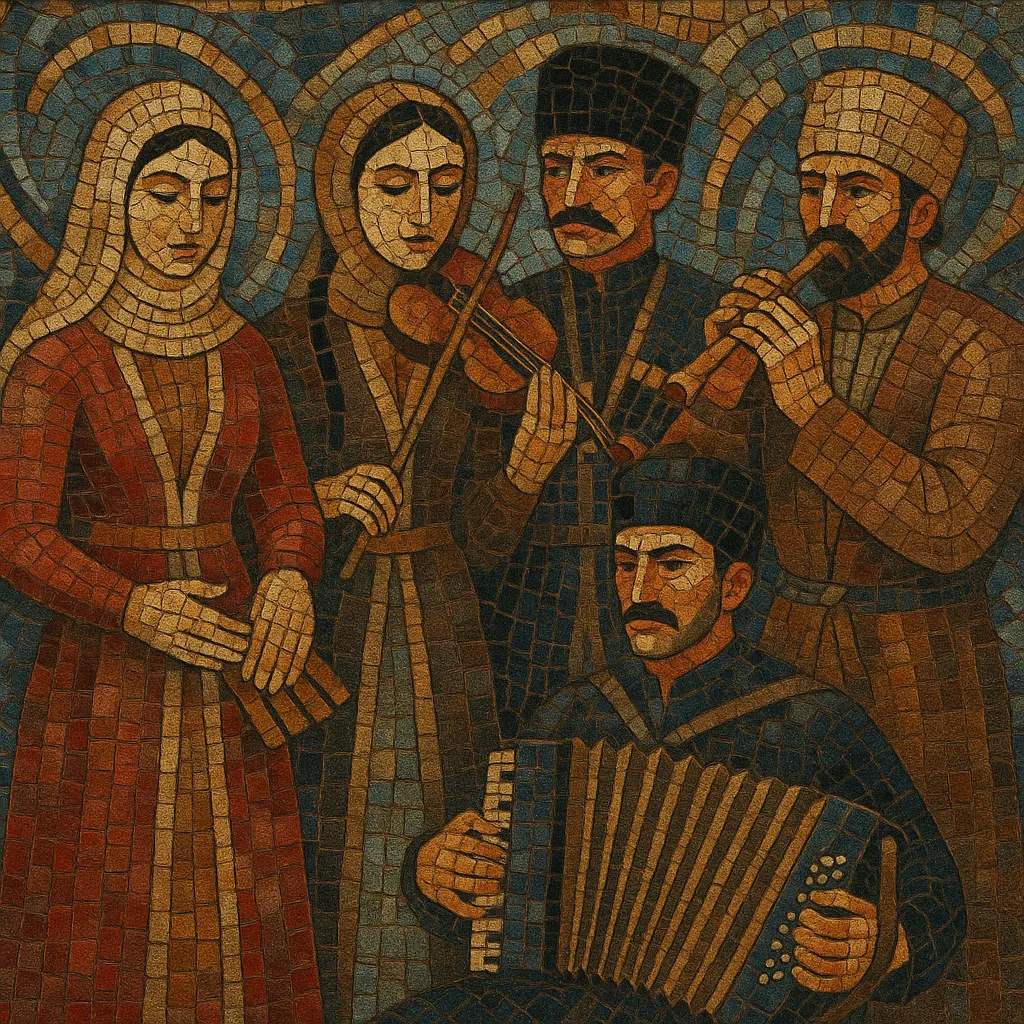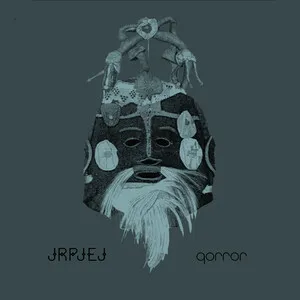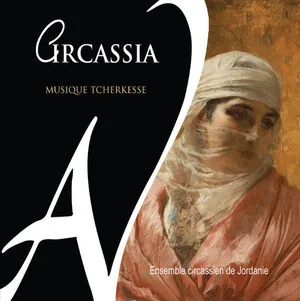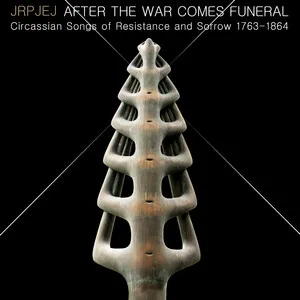Circassian folk music (Adyghe/Kabardian) comes from the Northwest Caucasus and is tightly linked to communal dance, oral poetry, and the Adyghe Xabze code of conduct.
It is characterized by driving dance rhythms in asymmetric meters (5/8, 7/8, 9/8), heterophonic textures, and antiphonal/song-leader practices at social dance gatherings (djegu). Core instruments include the pshine (Circassian button accordion), the pkhachich (wooden clappers), the shichepshin (a bowed spike fiddle), along with flutes and later, violin and clarinet. Vocal genres range from epic songs recounting the Nart sagas to wedding songs, laments of exile, and lyrical love songs.
The style exists both in the historical homeland (Adygea, Kabardino-Balkaria, Karachay-Cherkessia) and across a large diaspora (notably in Turkey, Jordan, and Syria), where it has continued to evolve while retaining key rhythms, modes, and dance functions.
Circassian folk music emerges from the Indigenous Adyghe peoples of the Northwest Caucasus. Its oldest layers are inseparable from oral epic tradition (especially the Nart sagas), communal dance (djegu), and village ritual life. Before the modern period, music-making centered on functional pieces for social dances, weddings, rites of passage, and heroic storytelling.
The 19th century saw intense upheaval culminating in mass displacement (particularly the 1860s), which formed a vast Circassian diaspora across the Ottoman world (today’s Turkey, Jordan, Syria). In this era, distinctive dance types and instrumental roles (pshine/accordion leader, pkhachich/clappers) were consolidated. The diaspora preserved core repertoires while absorbing local timbres and performance practices.
In the 20th century, Soviet cultural policy promoted staged folk ensembles, standardizing choreography and musical arrangements. State ensembles in Adygea and Kabardino-Balkaria brought Circassian dances and songs to national audiences, orchestrating traditional melodies for larger groups, adding violin/clarinet, and stabilizing concert forms without severing ties to community practice.
After the 1990s, revival and documentation intensified both in the homeland and diaspora. Artists and ensembles modernized instrumentation and production while retaining hallmark meters and melodies. Festivals, dance troupes, and cultural associations in Russia, Turkey, and Jordan continue to transmit repertoire, and younger musicians blend Circassian modes and rhythms with contemporary folk-pop and world-fusion aesthetics.







%2C%20Cover%20art.webp)
